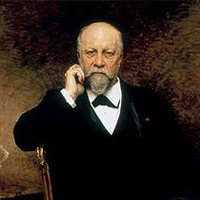Boucheron

Since its very beginning, Boucheron (Founded 1858) has carved out a place for itself among the great names as a reference of French luxury in the very exclusive world of designer jewelry. Boucheron’s work spanned multiple design eras, notably Art Deco, Art Nouveau, and Second Empire styles. Though he started with little capital and a small stock of jewelry, Boucheron quickly attracted Parisian trendsetters’ attention. This is greatly due to Boucheron’s innovative style and the excellence of his designs, the quality of which has always been lauded by experts throughout the eras. Boucheron’s love of India and Asia and his home of France inspired him to create many one of a kind pieces and collections dedicated to cultures around the world. Among his specialties were lacy gold metalwork embellished with diamonds, engraved diamonds (uncommon still today) and delicate plique-à-jour enameling. The gemstones he used were carefully selected for color and quality. Even Boucheron’smost accomplished competitors, like André Massin, praised the firm’s pieces for their “faultless craftsmanship.”
Much of the firm’s early reputation can be attributed to the many lavish and important weddings whose brides, grooms, and attendants were decked with jewels specially created by Boucheron. One of these much-publicized events was the 1893 marriage of King Ferdinand I of Bulgaria to Princess Marie-Louise of Bourbon-Parma: this was also an early indication of the royal patronage the firm was to enjoy, from the Reza Shah Pahlavi to H.M. Queen Elizabeth II.
The Art Nouveau style which replaced the Revivalist took its inspiration from the poetry of nature and referenced past models. Necklaces and tiaras created in the Boucheron workshops featured cut out leaves set with diamonds, sinuous lines of branches in gold and the shimmer of precious stones. Boucheron explored plique-à-jour enamel thirty years before it became a staple technique of Art Nouveau, and ingeniously combined gold with steel – a technique used by armories – to create original pieces of jewelry. The Universal Exhibition in Paris in 1900 marked the peak of the Art Nouveau movement and Boucheron was its master, receiving both the Grand Prix and Gold Medal for his designs.
Frédéric Boucheron’s son, Louis, assumed control of the business after his father’s death in 1902, and branches were opened in New York and London. Under Louis, Boucheron continued to produce exquisite Art Nouveau, Edwardian, and Art Deco pieces. During the 1930’s and 40’s, Boucheron popularized detachable dress clips, i.e., clips that could be worn separately or combined into a single piece, depending on one’s outfit or mood. Like others during the Retro period, its designers made ample use of three-dimensional motifs, flexible chains, and tassels.





